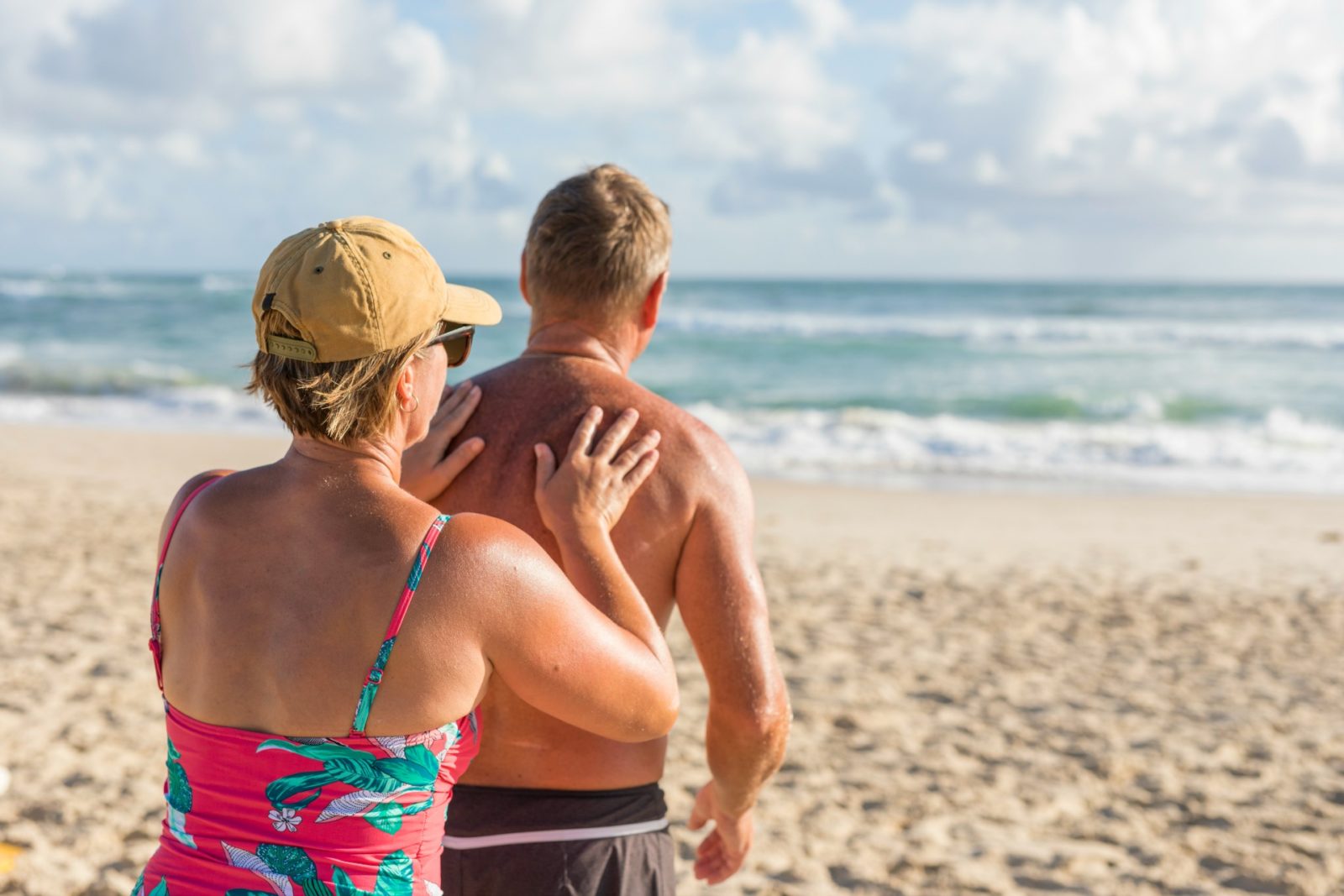
The weather is warming up and while people know they need to slip on a shirt, spread on some sunscreen, fetch a hat and seek regular shade when spending time outdoors, it’s also a timely reminder to check your skin for possible skin cancers.
Skin cancer is caused by UV damage from the sun which can damage a person’s DNA over time. When this occurs, damage can develop into melanoma, squamous cell carcinoma or basal cell carcinoma. According to Cancer Council Australia, eight in 10 newly diagnosed cancers are skin cancers and around two in three Australians will be diagnosed with skin cancer by the age of 70.
Starts at 60 is taking a look at each of the three types of skin cancers and how you can spot them. Of course, it’s always important to talk to a GP or health professional about your skin as they will be able to diagnose if spots, lumps and bumps are cancerous and if treatment or further action is required.
Melanomas commonly appear in areas of the body that have been expose to the sun, but it’s also possible for them to pop up in areas that haven’t been exposed to sunlight. According to Cancer Council Australia, this type of skin cancer often has no symptoms, but people may notice a change to an existing mole or even notice a new lump on their body.
A key way to tell if a mole is becoming cancerous is to perform the ABCD check. In a viral post shared on Cancer Council Australia’s Facebook page a few year ago, this type of check analyses a mole or spot’s asymmetry, border, colour and diameter.
Check the asymmetry of spots and moles and the ones to be concerned about are the ones that lack symmetry. If a line was drawn through the middle of the lump or bump and the sides didn’t match up, it could be a warning sign to mole is turning cancerous.
Also pay attention to the border of the spot and check whether the mole or spot is spreading from its original boarder or if it has an irregular edge. Similarly, pay attention to the spot’s colour. Blotchy spots with a variety of colours need be taken seriously, while it’s also important to check whether the size of a spot is growing or getting bigger.
Early stages of melanoma may be treated with surgery, but more advanced stages may require a combination of surgery, radiotherapy, targeted therapy or immunotherapy. Always talk to a GP about any suspicious spots, lumps or bumps on your body as soon as they appear.
While melanoma skin cancers can be deadly, they’re not as common as Basal cell carcinomas (BCCs) or squamous cell carcinomas (SCC), which usually aren’t life-threatening. Still, they need to be taken seriously, given that hundreds of people still die each year from these cancers.
BCCs are slow-growing and don’t usually come with symptoms. Having said that, they are identifiable as a pearly lump or a dry or scaly area of the skin that’s shiny, pale or bright pink in colour.
SCCs on the other hand usually appear in areas of the body that have been exposed to the sun and tend to grow a lot quicker than BCCs. In fact, they can develop within a matter of weeks and appear as thick red spots and fast-growing lumps. They can also appear as tender sores that can’t be touched.
Both these spots need to be brought to the attention of a health professional as soon as possible. It’s not uncommon for them to perform a biopsy to determine the stage of the cancer and depending on how severe this is, it may be treated with surgery, chemotherapy, radiotherapy or may even be burned, frozen or scraped off.

Because most skin cancers are caused by exposure to the sun and UV rays, protection against this is the best way to prevent them from developing. This means wearing protective clothing that covers the skin when spending time outside, using SPF30+ sunscreen at a very minimum and reapplying it every two hours, opting for a hat that covers the face, ears, neck and head, avoiding direct sunlight where possible and protecting the eyes with sunglasses.
People are also advised to avoid using solariums, tanning salons and spending time in the sun in the middle of the day when they UV rays are their most extreme.
